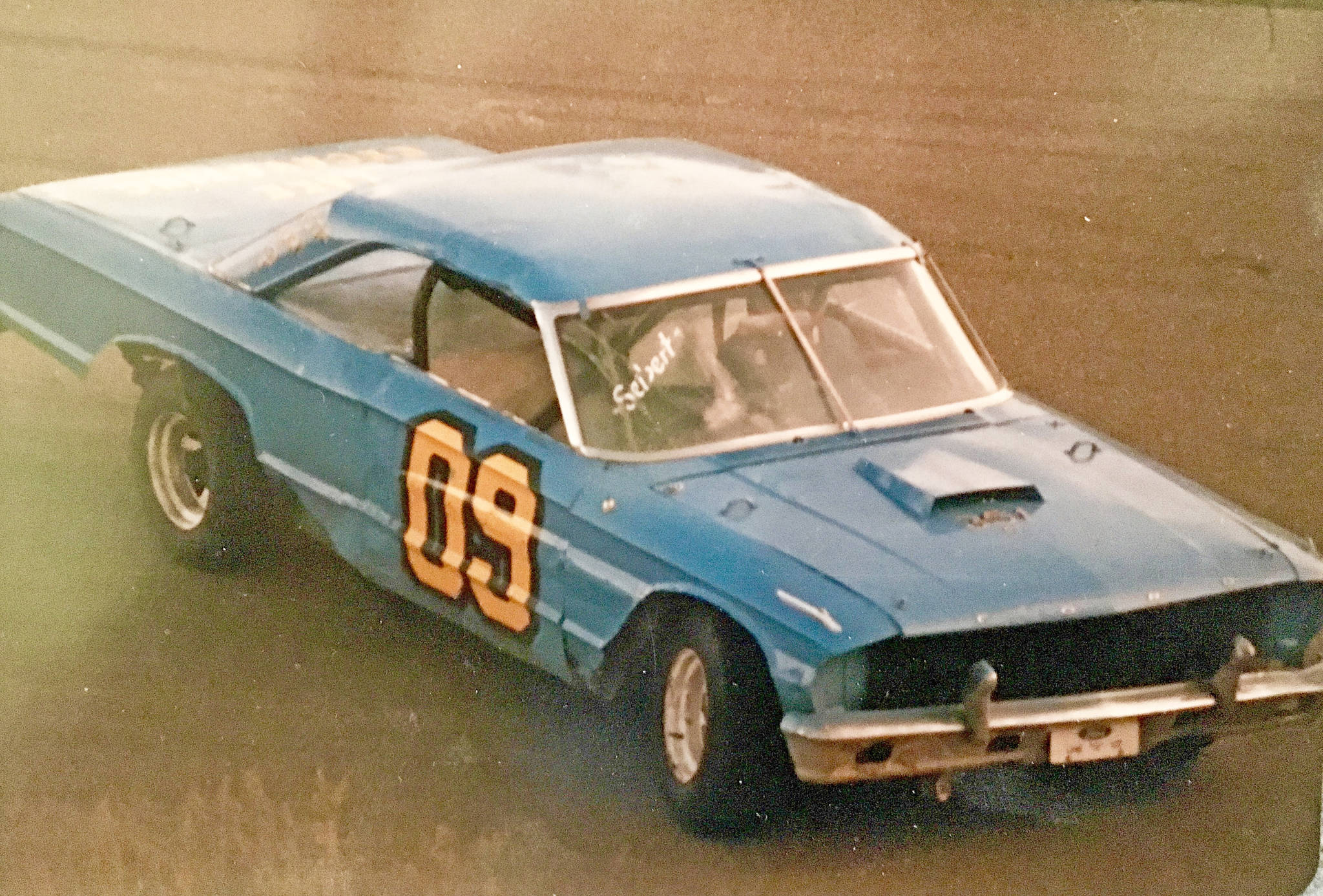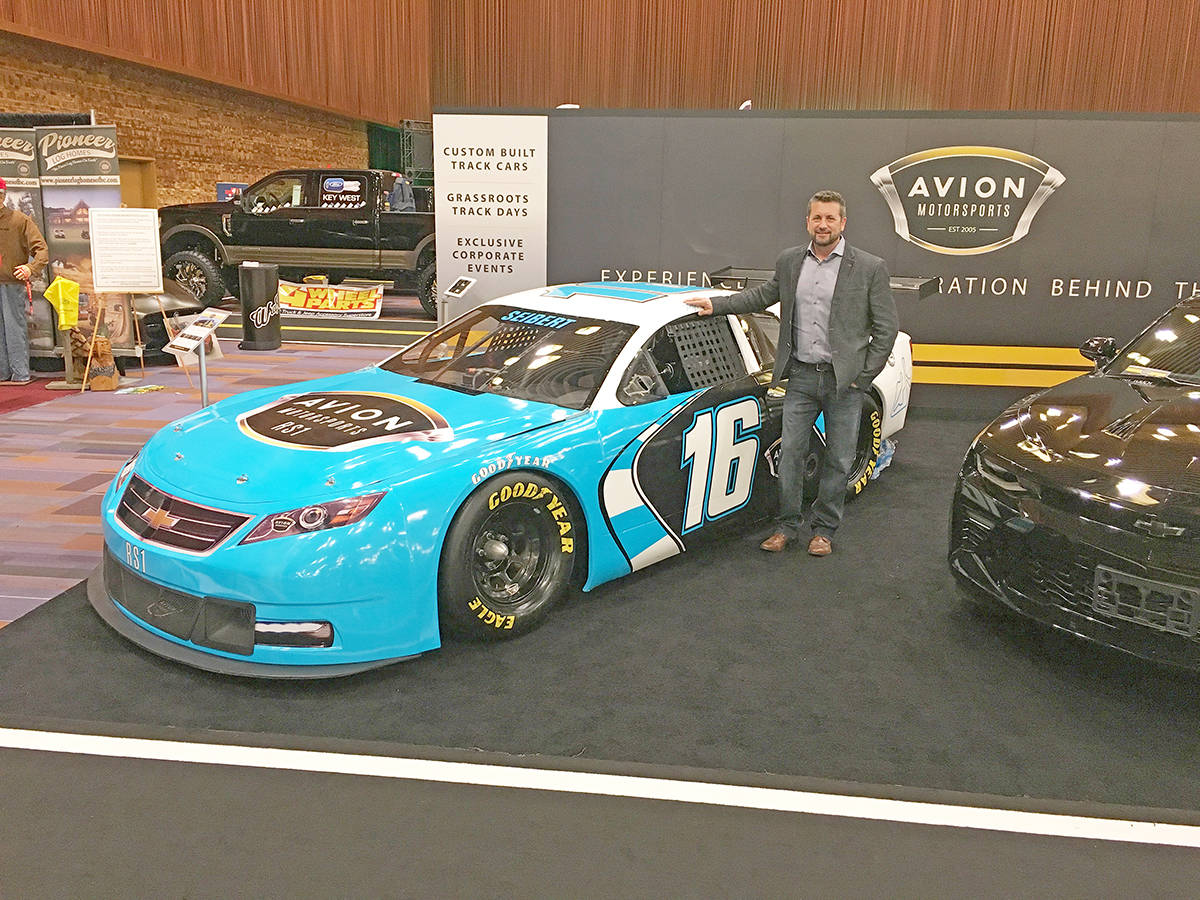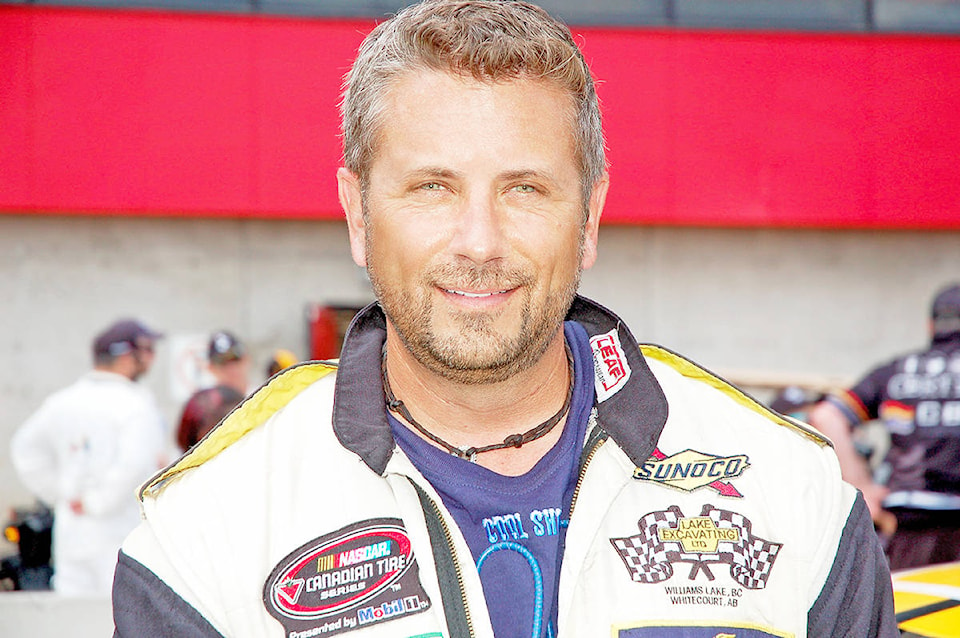As a professional race car driver, Trevor Seibert enjoys life at a faster speed than most people.
Born in Williams Lake, he credits the beginning of his racing career to attending events and competitions in his hometown, as well as the neighbouring communities of Quesnel and Prince George back in the early 80s before he turned pro.
As a kid, he raced go-carts for a few years, but it wasn’t until he was 16 that he began racing cars.
His father Karl Seibert raced too, but Trevor said Karl was no longer racing by the time he was growing up.
“We spent a lot of time at the race track watching what was going on,” Trevor said.
When he was five years old the Seiberts moved to Pablo Creek Ranch where as a youngster Trevor drove farm equipment.
“I lived there until I was about 17 years old. There wasn’t much to do out there but drive motorized vehicles, whether it was motorbikes or pickups. I was always racing around the field doing something.”
Trevor built his first car for the race track when he was 16, an experience he said was a bit of a learning curve.
“I built my own engines for a while as well but when I was 22 I turned pro and was driving production race cars. Many of those cars were built in places like England and were full blown race cars. They were far beyond the construction ability I had, but I understood them very well.”
The experience turned him on as far as how the race cars work and the process of designing them.
Two years ago, Trevor’s construction company Lake Excavating Ltd., which he purchased from his father in the mid-90s, partnered with fellow racers Bill Drossos, David King and Jacques Villeneuve to build Area 27— a world class race track southeast of Oliver, B.C.
Trevor co-designed Area 27 with Formula 1 Champion Jacques Villeneuve and did all of the engineering and construction.
It opened at the end of August 2016.
Bill came up with the idea to build the track, Trevor said.
“He is a ski instructor these days. He was coming down from Mount Baldy when he saw a piece of property he thought would be a great place for a race track.”
Bill met with Chief Clarence Louie of the Osoyoos Indian Band and tossed the idea to him.
The Chief was “pretty” welcoming and the project started to take off for Bill who then called David to see if he was interested in being part of the project.
Bill and Jacques had gone to racing school together back when they were teenagers in Ontario, Trevor explained.
“Then Bill called me because I own a construction company and asked if I’d be interested in working on the project with him.
“We hadn’t spoken in 15 years or so. And David, well he was instrumental in Whistler Blackcomb’s development way back.”
Before committing to the project, Chief Louie canvassed community members about the track.
“The band held a delegation vote, the community supported it and we were off to the races, so to speak,” Trevor said.
Part of the agreement with the band was to hire community members when the track was being built and operated.
In the end, 70 per cent of the construction crew were band members, many who trained on machinery and large equipment.
Today some band members are working on other Lake Excavating projects around Penticton, and the race track employs band members for maintenance and security.
Lake Excavating has nine different joint venture partnerships around the province with First Nation communities including the Williams Lake Indian Band and its Coyote Rock residential and business development which is presently underway.
Building the race track cemented Trevor’s decision to embark on designing a race car with his company Avion Motorsports.
He wanted a purpose-built car that suited the track, he said.
“I co-designed the RS1 which I named for my son Ryley. We adopted some of the knowledge we gained racing NASCAR, and while the cars look the same when you see them side by side, what is underneath is considerably different.”
The RS1 was designed from the ground up by Trevor and his NASCAR crew chief Al Lebert with all the hand work being done by Lebert and a crew at Avion Motorsports in Arnprior, Ont.
“We took what we needed from our NASCAR program, adopted it and developed quite a few new things,” Trevor said. “It took about three months to finalize the design.”
Avion doesn’t design engines so they found one that GM produces and modified it slightly to make it suit their application and had the first prototyped constructed by April 2016 and showcased it at a membership rally for the track.
“We just took another order for number eight and are currently building chassis number five, six and seven,” Trevor said. “The RS1 is catching on quickly now that we are showcasing it.
Trevor brought the RS1 to the Vancouver International Auto Show in March, where it made its major debut.
While setting up his booth at the car show, he realized that on one side was Pioneer Log Homes of B.C. with its log car, the Cedar Rocket, and on the other side was an electric car and the CEO of that company was Trevor’s agent when he was driving IndyCar for a couple of years.
“It was interesting to have a fully-electric car on one side and a wooden car on the other and be the racing car in the middle,” he said chuckling. “I was wrapped around by good company.”
A great thing about the RS1 is the fact Trevor can share his love of the sport because the car has two seats instead of one.
With full containment seats and five-point harnesses on both sides, a passenger is as fully protected as the driver and can ride along for training purposes or just for the experience.
“I can’t think of too many other sports where you get to strap yourself on the back of an athlete,” Trevor said, noting when people go for a ride it’s the cornering speed that really blows them away. “They experience the g-force that you don’t experience in a passenger vehicle.”
Comparing it to riding in the Scrambler at the Stampede Ground fairs when he was a kid, Trevor said if you were the guy on the outside, everybody would squish up against you.
“Those are the kinds of g-forces you experience in a race car.”
When people get out of the race car after their first ride they tell Trevor they had a hard time just holding their head up and wonder how he can drive like that for an hour and a half.
“For us as drivers it’s exciting to share what we do. I tell people from Williams Lake it would be like being strapped on the back of a bull with a bull rider that knows how to ride.”
Trevor has had hundreds of people in the car and they cannot stop talking about it.
“Seeing it live really opens your eyes but when you go for a ride with a professional driver it’s a whole other dimension.”
At their track, the RS1 has gained speeds as high as 265 kilometers per hour and is capable of 300 km/h.
Up until five or six years ago, Trevor ran his NASCAR team out of a shop in a hangar at the Williams Lake Airport, but said the travelling was too extensive.
“You can imagine, with 90 per cent of the races being in Eastern Canada all the way out to Halifax, we were travelling 3,000 miles every time we went to a race. Now everyone who works on the team is based in Ontario so it made sense to build the cars over there.”
Avion Motorsports has toyed with the idea of bringing the manufacturing to the Okanagan, but time will tell, Trevor said.
“I would like to see it there, but I have a lot of good people back in Ontario so it’s not just as easy to say we’re moving west.”
Trevor continues racing select events with the Canadian NASCAR’s Pinty’s Series which takes him all across Canada and hopes to add a NASCAR race to Area 27 in early 2018.
He lives in Vancouver but still has an office in the lake city for his company.
“Most people know Lake Excavating from around Williams Lake because that’s where my dad started it. When I bought it from him I expanded all over B.C. and into Alberta about 15 years ago and half of our business is there as well.”
Trevor returns to Williams Lake, spending a few days a month here, and said he would like to bring the RS1 to Williams Lake one day.
“I know a lot of people around town would be interested and it helps promote the track. We have had a few people out of Williams Lake buy memberships to the track even.”
Avion Motorsports has also evolved into an entertainment company where they host events at the track.
During the May long weekend Avion held its first Grassroots Track Day, aimed at giving back to the sport where Trevor and his son Ryley, also a NASCAR driver, host non-members for an opportunity to try out a day of lapping their own car at Area 27.
The track is private and is based on membership sales much like a golf course. The only other way to get on the track is to take a racing school or to attend one of the grassroots days.
“There are four days a year that for a small fee people can come onto the track with their own vehicle. It’s a way of giving back for someone who cannot afford a whole membership,” he said.
“I do get a lot people in Williams Lake asking me how they can come and try it out, and I tell them this is one way.”


